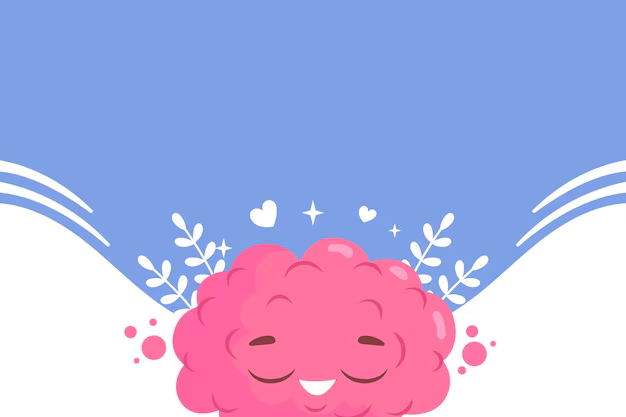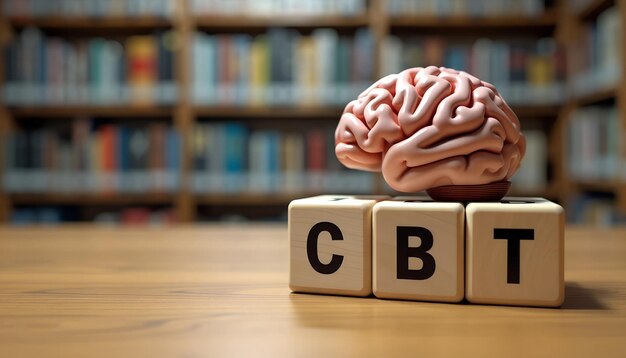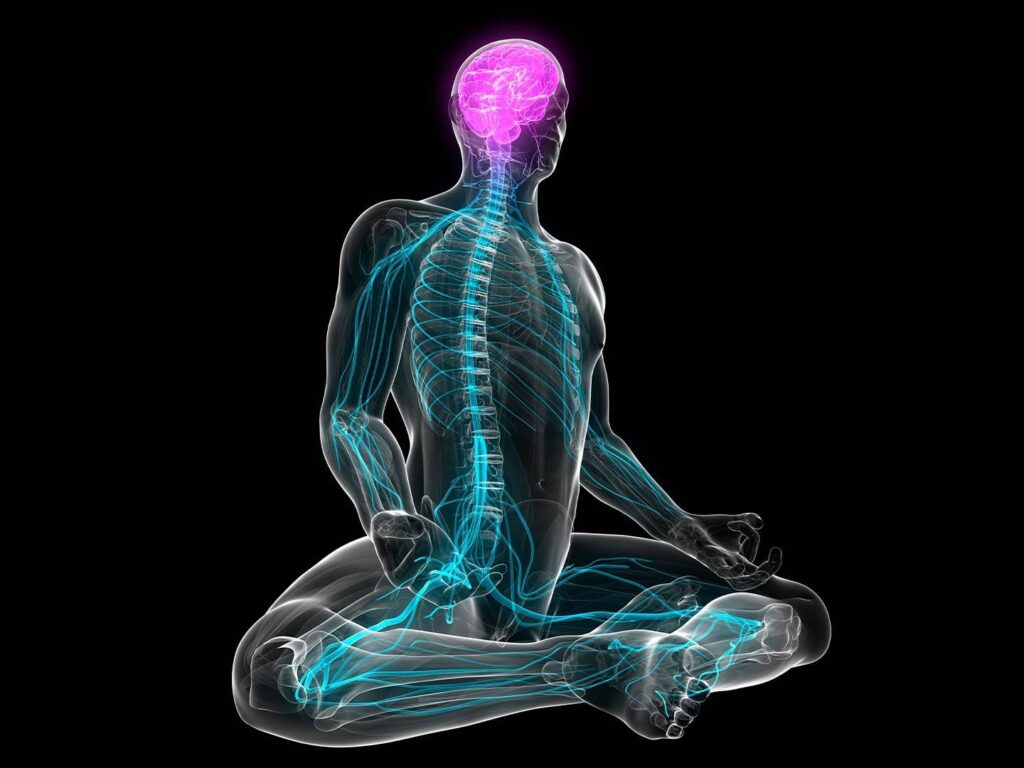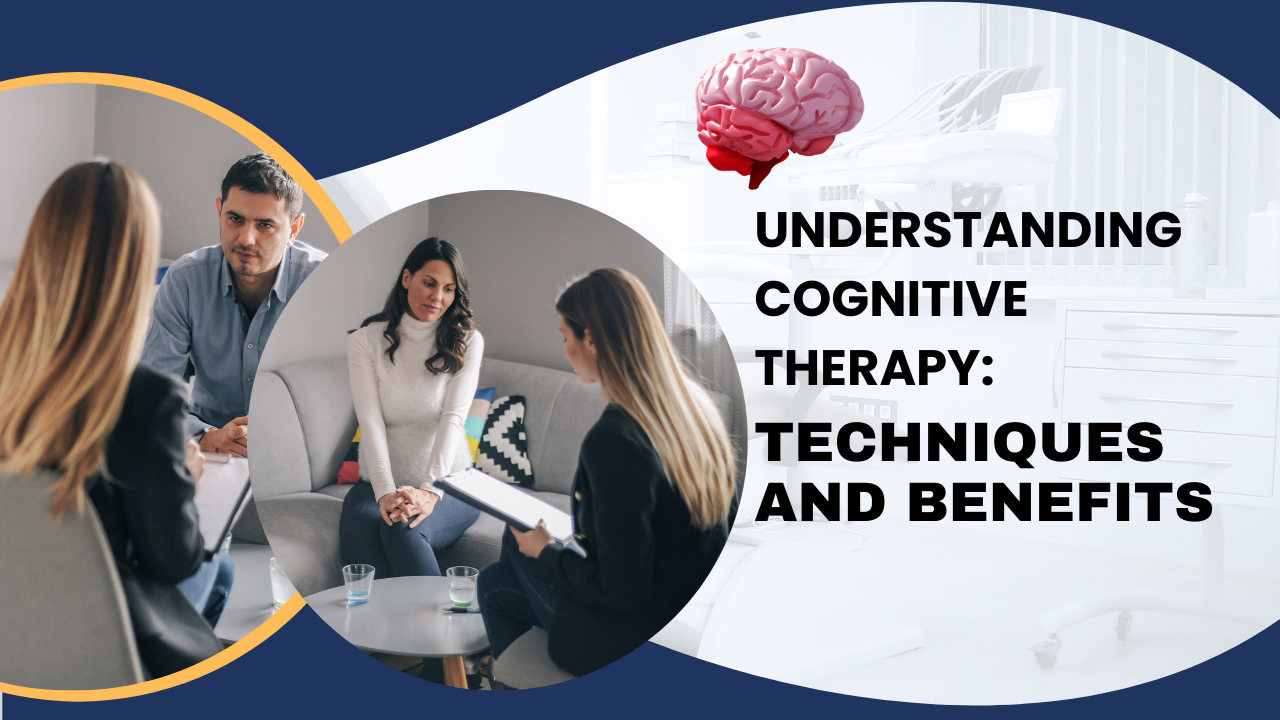In today’s fast-moving and constantly changing world, mental health is gaining the attention it deserves. As more people begin to prioritize their psychological well-being, the stigma once surrounding mental health issues is gradually disappearing. This shift has encouraged many individuals to explore ways to improve their emotional and mental balance.
Among the many options available, cognitive therapy has emerged as one of the most trusted and effective approaches. This method is well-supported by scientific research and is widely used by mental health professionals around the world. It helps people identify and change negative thought patterns that may be affecting their emotions and behaviors.
However, before understanding how cognitive therapy works, it’s important to learn about the core concept it’s based on: cognition. Cognition refers to the way we think, perceive, and interpret the world around us. By improving how we process thoughts, cognitive therapy can lead to healthier thinking and improved emotional well-being.
Understanding Cognition
Cognition includes the many mental processes we use to gain knowledge and understanding. It involves thinking, learning, remembering, problem-solving, and using our senses to interpret the world around us. Through experience and thought, we develop ideas, make decisions, and respond to situations. These processes help us understand our environment and shape how we act and feel. Cognition is a key part of everyday life, influencing everything from simple tasks to complex reasoning. It forms the foundation for learning and plays a major role in how we relate to others and ourselves.
These processes include:
Perception – how we interpret sensory information
Attention – how we focus on specific stimuli
Memory – how we store and retrieve information
Language – how we understand and use language
Thinking and Problem Solving – how we analyze situations and come to conclusions
Learning – how we adapt our behavior based on experience
These cognitive processes help us make sense of the world, make decisions, solve problems, and regulate our emotions. When our cognitive systems function optimally, we navigate life with clarity and confidence. However, distortions or dysfunctions in cognition can lead to emotional and behavioral difficulties—this is where Cognitive Therapy comes into play.
What is Cognitive Therapy ?

Cognitive therapy is a type of mental health treatment that focuses on how a person’s thoughts influence their emotions and behaviors. It is based on the idea that negative thinking patterns can lead to emotional problems such as anxiety, depression, or stress. By identifying and changing these unhelpful thoughts, people can improve how they feel and act in daily life.
In cognitive therapy, individuals work closely with a trained therapist to explore their thoughts and beliefs. The therapist helps them recognize patterns of thinking that may be unrealistic or harmful. Together, they develop healthier ways of thinking that can lead to better emotional responses and behavior. This process often includes practical exercises and real-life examples to reinforce learning.
Cognitive therapy is widely used to treat many mental health conditions, including depression, anxiety disorders, and even stress-related problems. It offers long-term tools that help individuals manage their thoughts more effectively, making it a valuable approach for improving emotional and mental well-being.
Core Principles of Cognitive Therapy
Cognitive Distortions: These are irrational, exaggerated, or biased ways of thinking that can cause emotional distress. Common examples include thoughts like “I always fail” or “Nobody likes me.” In cognitive therapy, identifying and correcting these distortions is an important step toward healthier thinking.
Automatic Thoughts: These are quick, unconscious thoughts that occur in response to everyday situations. They often happen without us even realizing it and can influence our emotions and behaviors. Cognitive therapy helps individuals become aware of these automatic thoughts and examine their accuracy.
Cognitive Restructuring: This is the process of identifying, challenging, and replacing unhelpful or negative beliefs with more balanced and realistic ones. It is a core technique used in cognitive therapy to improve mental well-being.
Collaboration: In cognitive therapy, the therapist and client work together as equal partners. They form a team to explore the client’s thoughts and develop effective strategies for change.
Empirical Testing: Clients are encouraged to test their beliefs and assumptions through real-life activities. This approach, used in cognitive therapy, helps them gather evidence and see if their thoughts truly match reality.
Importance of Cognitive Therapy
Evidence-Based Effectiveness
Cognitive therapy, especially in its modern form known as Cognitive Behavioral Therapy (CBT), is one of the most well-researched methods in psychology. It has been widely studied and proven effective for treating many psychological conditions, such as depression, anxiety, and stress-related disorders. CBT combines the principles of cognitive therapy with behavioral techniques to help individuals understand and change unhelpful thought patterns and behaviors. Its strong scientific support and broad success across different mental health issues make it one of the most trusted and widely used therapeutic approaches in modern mental health care.
Depression
Anxiety disorders
Post-Traumatic Stress Disorder (PTSD)
Obsessive-Compulsive Disorder (OCD)
Eating disorders
Substance abuse
Long-Term Benefits
Unlike some treatments that offer only short-term comfort, cognitive therapy helps people build lasting skills for better mental health. Clients learn how to identify unhelpful thoughts and replace them with more balanced, realistic ones. These skills are not just useful during emotional struggles but also in handling everyday situations. By practicing these techniques, individuals gain more control over their thoughts and feelings. Cognitive therapy empowers people to manage challenges more effectively throughout their lives.

Holistic and Adaptive
Cognitive therapy can be combined with other treatments like mindfulness practices, exposure therapy, and medication-based approaches (pharmacotherapy) for a more comprehensive care plan. This flexibility allows it to address a wide range of mental health needs. It is also highly adaptable, making it suitable for people of all ages, including children, teens, adults, and older adults. By blending cognitive therapy with other methods, therapists can create personalized strategies that work best for each individual’s unique situation and background.
Self-Empowerment
Cognitive therapy takes an empowering approach by encouraging clients to take an active role in their own healing. Instead of relying solely on the therapist, individuals learn skills to manage their thoughts and emotions independently. Through this process, they are taught to become their own therapists, which builds confidence, autonomy, and long-term emotional strength. This self-guided learning helps clients become more resilient, allowing them to handle future challenges more effectively, both during and after the cognitive therapy process.
Top 10 Cognitive Therapy Approaches
Let’s explore the top 10 approaches within the domain of cognitive therapy. Each method offers unique tools and perspectives for addressing cognitive distortions and emotional struggles.
Cognitive Behavioral Therapy (CBT)
Cognitive Behavioral Therapy (CBT) is the most commonly used and thoroughly researched form of cognitive therapy. It is widely recognized for its effectiveness in treating a range of mental health issues, including anxiety, depression, and stress-related disorders. CBT focuses on helping individuals recognize negative thought patterns and replace them with more balanced and realistic thinking.

In addition to cognitive restructuring, CBT also includes behavioral strategies such as exposure therapy and activity scheduling. These techniques help people gradually face their fears, build healthy habits, and increase positive daily activities. By combining thought-based and action-based methods, CBT offers a well-rounded approach to emotional healing. This makes it one of the most trusted forms of cognitive therapy, known for providing practical skills that can be used in everyday life.
Used for: Depression, anxiety, PTSD, eating disorders
Key Technique: Thought records to identify and challenge cognitive distortions
Goal: Change negative thought patterns to influence emotions and behavior
Rational Emotive Behavior Therapy (REBT)
Developed by Albert Ellis, Rational Emotive Behavior Therapy (REBT) is a form of cognitive therapy that focuses on identifying and challenging irrational beliefs. Ellis believed that many emotional struggles stem from unrealistic or harmful thoughts, which lead to negative feelings and behaviors. REBT aims to help individuals recognize these beliefs and replace them with more rational, constructive alternatives.
The goal of REBT is to empower people to take control of their thoughts and emotions, leading to improved mental well-being. By learning to change irrational thinking, individuals can reduce stress, anxiety, and other negative emotions. As a specific approach within cognitive therapy, REBT offers practical techniques for addressing emotional challenges and improving overall psychological health. It encourages long-term changes in thought patterns that help individuals cope with life’s difficulties more effectively.
Key Technique: The ABCDE model (Activating event, Belief, Consequence, Disputation, New effect)
Goal: Replace irrational beliefs with logical, self-supportive thoughts
Used for: Anxiety, anger, guilt, low self-esteem
Dialectical Behavior Therapy (DBT)
Originally developed for treating borderline personality disorder, Dialectical Behavior Therapy (DBT) is a specialized form of cognitive therapy that combines elements of Cognitive Behavioral Therapy (CBT) with mindfulness and emotion regulation techniques. DBT was made to help individuals manage intense emotions and improve relationships by teaching them how to cope with stress and emotional turmoil in healthier ways.

In DBT, clients learn to balance acceptance with change, incorporating mindfulness practices to stay present and focused. The therapy emphasizes emotion regulation skills to help people better understand and control their emotional responses. By integrating cognitive therapy techniques with mindfulness, DBT provides a comprehensive approach for managing difficult emotions, improving interpersonal skills, and building resilience, making it a valuable tool for treating a variety of mental health conditions beyond borderline personality disorder.
Used for: BPD, suicidality, emotional dysregulation
Key Technique: Mindfulness, distress tolerance, interpersonal effectiveness
Goal: Balance acceptance with change
Mindfulness-Based Cognitive Therapy (MBCT)
Mindfulness-Based Cognitive Therapy (MBCT) combines the principles of cognitive therapy with mindfulness meditation to help individuals manage their thoughts and emotions. The core focus of MBCT is teaching people to become more aware of their thoughts as they occur, without judging or reacting to them. This awareness helps prevent negative thinking patterns from spiraling into emotional distress.
In MBCT, individuals learn mindfulness techniques to stay present and observe their thoughts without attachment. By combining cognitive therapy with mindfulness, MBCT offers a unique approach to emotional healing, helping people break free from cycles of depression and anxiety. The goal is not to eliminate negative thoughts but to change the way individuals relate to them, promoting emotional well-being and preventing future episodes of mental health struggles.
Used for: Recurrent depression, anxiety, stress
Key Technique: Mindfulness exercises like body scans and thought labeling
Goal: Prevent relapse by altering the relationship with thoughts
Schema Therapy

Developed by Jeffrey Young, Schema Therapy is an advanced form of cognitive therapy made to help individuals address deep-rooted cognitive patterns known as “schemas.” These schemas are established during childhood and shape how people view themselves, others, and the world around them. They can lead to long-standing emotional challenges and unhealthy behavior patterns.
Schema Therapy focuses on identifying these negative schemas and changing them to promote healthier thinking and behavior. By exploring the early experiences that created these patterns, individuals can understand how they affect their lives and relationships. This approach integrates elements of cognitive therapy, emotion-focused techniques, and experiential exercises to heal and reframe these long-held beliefs. The goal is to help individuals break free from destructive patterns and develop healthier ways of thinking, feeling, and behaving in everyday life.
Used for: Personality disorders, chronic depression, relationship issues
Key Technique: Schema diaries, imagery rescripting
Goal: Heal maladaptive schemas through re-parenting and restructuring
Acceptance and Commitment Therapy (ACT)
Although not a traditional form of cognitive therapy, Acceptance and Commitment Therapy (ACT) challenges the dominance of thoughts by focusing on psychological flexibility. ACT teaches individuals to accept their thoughts and emotions without judgment, rather than trying to eliminate them. This approach encourages a healthy relationship with thoughts, allowing them to pass without controlling behavior or emotions.
The core of ACT involves values-based action, where individuals are encouraged to identify their personal values and take actions aligned with those values, even in the presence of difficult thoughts or feelings. By combining elements of cognitive therapy with mindfulness and acceptance techniques, ACT helps individuals live a more meaningful and fulfilling life, free from the grip of negative thoughts and mental barriers. The focus is on living according to one’s values, rather than trying to control or suppress internal experiences.
Used for: Chronic pain, depression, anxiety, OCD
Key Technique: Cognitive defusion, values clarification
Goal: Accept thoughts and feelings rather than fighting them
Metacognitive Therapy (MCT)

Developed by Adrian Wells, Metacognitive Therapy (MCT) is a form of cognitive therapy that focuses on the processes involved in thinking, especially worry and rumination. MCT helps individuals understand how their thinking patterns, such as constant worry or overthinking, contribute to emotional distress. It emphasizes the importance of controlling the way people relate to their thoughts, rather than just changing the thoughts themselves.
In MCT, clients learn how to recognize unhelpful thinking patterns and develop strategies to break free from cycles of worry and rumination. This approach teaches individuals to modify their cognitive processes, allowing them to manage their thoughts more effectively. By addressing the way people think about their thoughts, MCT offers a powerful tool for managing anxiety, depression, and other mental health issues, providing long-term benefits beyond typical cognitive therapy approaches.
Used for: Generalized anxiety, OCD, depression
Key Technique: Attention training and modification of metacognitive beliefs
Goal: Reduce unhelpful thinking patterns about thinking itself
Compassion-Focused Therapy (CFT)
Developed by Paul Gilbert, Compassion-Focused Therapy (CFT) is a form of cognitive therapy designed to help individuals who are self-critical develop self-compassion. Many people struggle with feelings of shame and low self-esteem, which can lead to emotional distress and hinder personal growth. CFT addresses these issues by teaching individuals to treat themselves with the same kindness and understanding they would offer others.
In CFT, the focus is on cultivating positive emotional experiences through self-compassion, allowing people to counteract negative thoughts and feelings. By learning how to manage self-criticism and develop a compassionate inner voice, individuals can break free from cycles of shame and low self-worth. CFT offers a unique approach within cognitive therapy, helping people build resilience, improve their emotional well-being, and develop healthier relationships with themselves.
Used for: Depression, trauma, eating disorders
Key Technique: Compassionate imagery, letter writing
Goal: Cultivate a kind and nurturing inner voice
Conclusion
Cognitive Therapy has revolutionized the field of mental health. Its power lies in the ability to turn the mind into an ally. By identifying and challenging maladaptive thought patterns, individuals can achieve profound emotional and behavioral changes.
Whether you’re dealing with anxiety, recovering from trauma, or seeking personal growth, cognitive therapy offers a well-structured, compassionate, and scientifically grounded path to healing. With a variety of approaches available—from classic CBT to modern innovations like ACT and MBCT—there’s a suitable cognitive therapy for everyone.
As we continue to understand the brain and mind, cognitive therapy remains a cornerstone of psychological treatment, offering hope, clarity, and transformation.
FAQs
What is cognitive therapy ?
Cognitive therapy is a type of psychotherapy that focuses on identifying and changing negative thought patterns that contribute to emotional distress. It helps individuals recognize unhelpful thinking, challenge these thoughts, and replace them with more realistic and positive alternatives.
How does cognitive therapy work ?
Cognitive therapy works by helping clients become aware of their automatic thoughts and cognitive distortions. Through techniques like cognitive restructuring and mindfulness, individuals can reframe their thinking and develop healthier behaviors and emotional responses.
What conditions can cognitive therapy help with ?
Cognitive therapy is effective for a wide range of mental health issues, including anxiety, depression, stress, PTSD, and even sleep disorders. It can help individuals manage their thoughts and emotions, improve self-esteem, and cope with various life challenges.
How long does cognitive therapy take ?
The duration of cognitive therapy varies depending on the individual and the issues they are addressing. Typically, therapy lasts between 12 to 20 sessions, but some people may need fewer or more sessions depending on their needs.
Is cognitive therapy the same as CBT (Cognitive Behavioral Therapy) ?
Cognitive therapy is a core component of Cognitive Behavioral Therapy (CBT), but CBT also incorporates behavioral techniques to address unhealthy behaviors. While both therapies focus on changing negative thought patterns, CBT includes additional strategies like exposure therapy and activity scheduling.


